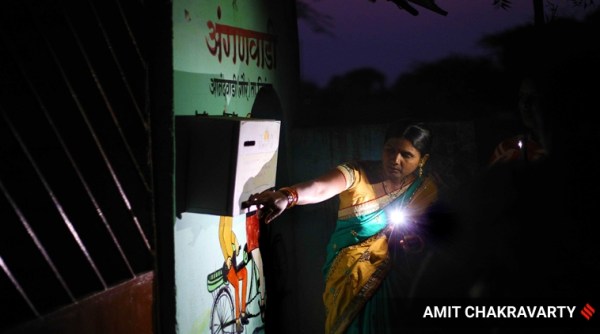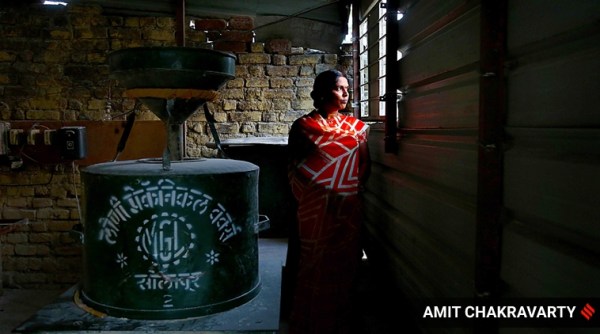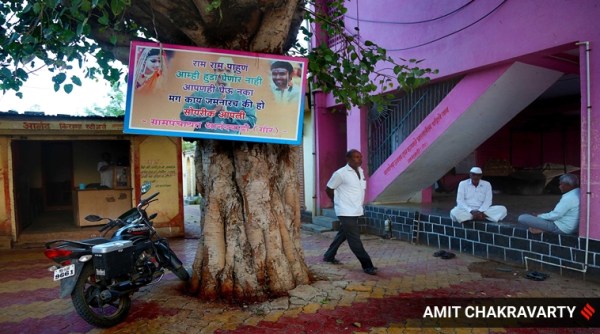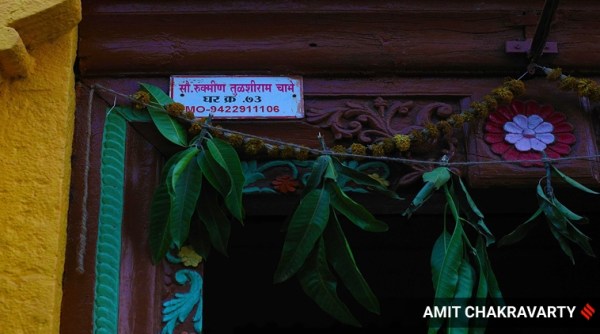NINE years after 50 per cent seats were reserved for women in Maharashtra’s gram panchayats, Anandwadi village in Latur’s Nilanga taluka has picked an all-woman panchayat. The six were elected unopposed in the panchayat polls held recently, their way paved by the performance of two-time sarpanch Bhagyashree Chame, who was one of the three women elected in 2015, along with Shobha Kasle and Kalpana Sagar.
Given the number of ‘Anandwadis’ in Nilanga, the village, located 25 km from Latur city, is more commonly known as Gaur. Home to 635 people, mostly farmers, Gaur has in the past five years seen improved cleanliness, a campaign against superstitions, change in name plates of all 112 homes to that of their women occupants, a sanitary napkin dispenser, inclusion of widows in festivities, a drive to encourage organ donation, and a free flour-grinding mill.
Having first become sarpanch in 2005, Chame says she will now make way for a new sarpanch, to be chosen from among the six members. The seventh seat, reserved for STs, will be filled soon, with another woman, she says. “We had a name in mind and the village had agreed to her, but her caste certificate was found invalid by the district administration.”
 Community water recycling well in Gaur Village in Latur.
Community water recycling well in Gaur Village in Latur.
One of the changes the village takes great pride in is the normalisation of the conversation around menstruation, led by ASHA worker Manisha Tangadpalle. “Menstruation is a natural process, but girls hesitate to talk to their mothers about it, though they talk to me freely. The sanitary napkin dispenser we set up in the anganwadi gives three napkins for Rs 5. Soon we will install a machine for safe disposal of napkins too,” Tangadpalle says.
Sangeeta Chame, who runs the mill that grinds flour for free, still remembers the Raksha Bandhan from two years ago, “in which brothers gifted sanitary napkins to sisters”.
 For menstrual hygiene a sanitary pad dispenser machine has been placed for the ladies in Gaur village in Latur.
For menstrual hygiene a sanitary pad dispenser machine has been placed for the ladies in Gaur village in Latur.
Tangadpalle’s grandfather, who passed away in 2017, was the village’s first organ donor. With his example prominently displayed at the gram panchayat office, 447 villagers have pledged to donate their organs since.
To dispel superstitions about ghosts and spirits, a deserted village crematorium has been transformed into a children’s park. “People used to be scared of the crematorium but now children come on their own to play,” says Bhagyashree’s husband Dyanoba Chame, who has authored a book in Marathi titled Nirmile Astitva Majhe (Creating My Identity) that tells the story of the transformation of the village.
Nilanga MLA Sambhaji Patil Nilangekar says another village in the taluka, Dongargaon, had chosen an all-woman panchayat but, unlike Gaur, they met with opposition. Gram panchayat polls are not contested on political party symbols but candidates are often backed by parties. In Gaur village, candidates were chosen by the villagers themselves.
 Community flour grinding machine at Gaur village in Latur.
Community flour grinding machine at Gaur village in Latur.
“I often cite this village as an example. The property cards in the village are all in the name of women, they have started their flour mill, women and men work equally hard in their farms,” says Nilangekar, a BJP legislator, adding that, importantly, the women panchayat members in Gaur are not proxy candidates for the men in their families.
A government official also acknowledges that this is what sets Gaur apart. “Leadership at the grass-root level takes time to emerge. But giving women power is important.”
The goodwill earned by the members means villagers are ready to pitch in with donations, like for renovation of the gram panchayat office, to supplement the panchayat’s modest annual budget of about Rs 2.5 lakh. One of the schemes the funds have helped organise is the Kanyadaan Yojana, to ensure no one “thinks of their daughters as a burden”. In the past five years, villagers have shared expenses for five weddings. A board at the entrance to the panchayat declares that the village doesn’t give or receive dowry.
 A poster being put up against dowry marriage at Gaur village in Latur.
A poster being put up against dowry marriage at Gaur village in Latur.
Ayodhya Chame, 55, head of Gaur’s Tantamukti Samiti or dispute-resolution committee, says the panel ensures disagreements are resolved before they turn into serious rows. “This is why we could elect our gram panchayat unopposed,” she says.
Ayodhya points out that having women in leadership roles sets a good role model for the younger generation. As an example, she says, “Earlier, only fathers would go to children’s school to discuss issues. Now mothers come, and children see them as having a role beyond the home.”
Bhanudas Nagmode, 74, a retired primary school teacher, says they are happy to concede the success to their women. “We have had no infectious diseases in the last many years, open drains have been covered, the village is cleaner,” Nagmode lists.
 Name plate on the door at Gaur Village in Latur.
Name plate on the door at Gaur Village in Latur.
Ganga Chame, 29, among the six new panchayat members, says the election marks another milestone. “We came here as daughters-in-law, but our families never discouraged us from participating. They put their faith in us and let us take our own decisions.”
Vishnu Chame, a former member of the panchayat, says it is not surprising that Gaur was receptive to change. Home to Marathas, Dhangars, OBCs and STs, Gaur has never let caste matter, he says. Whether weddings or funerals, every family in the village participates.





